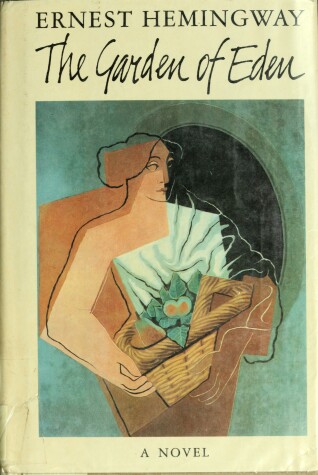Flamingo modern classics
4 total works
A LATER CLASSIC FROM AMERICA'S PREMIER FICTION WRITER
First published in 1970, nine years after Hemingway's death, this is the story of an artist and adventurer -- a man much like Hemingway himself. Beginning in the 1930s, Islands in the Stream follows the fortunes of Thomas Hudson, from his experiences as a painter on the Gulf Stream island of Bimini through his antisubmarine activities off the coast of Cuba during World War II. Hemingway is at his mature best in this beguiling tale.
First published in 1970, nine years after Hemingway's death, this is the story of an artist and adventurer -- a man much like Hemingway himself. Beginning in the 1930s, Islands in the Stream follows the fortunes of Thomas Hudson, from his experiences as a painter on the Gulf Stream island of Bimini through his antisubmarine activities off the coast of Cuba during World War II. Hemingway is at his mature best in this beguiling tale.
A sensational bestseller when it appeared in 1986, The Garden of Eden is the last uncompleted novel of Ernest Hemingway, which he worked on intermittently from 1946 until his death in 1961. Set on the Cote d'Azur in the 1920s, it is the story of a young American writer, David Bourne, his glamorous wife, Catherine, and the dangerous, erotic game they play when they fall in love with the same woman. "A lean, sensuous narrative...taut, chic, and strangely contemporary," The Garden of Eden represents vintage Hemingway, the master "doing what nobody did better" (R. Z. Sheppard, Time).
Hemingway's literary apprenticeship was served in journalism, a career that he carried on vigorously for over four decades. From his early work as a correspondent for the "Toronto Star" in Europe during the 1920s, through his articles for "Esquire" and his first-hand reports of the Spanish Civil War, to the mellow, ironic chronicle of his last African adventures, few correspondents have produced a more impressive body of work. Seen in the light of his brilliance as a writer of fiction, this collection is revealing - readers can recognize the sources of "Fiesta", "For Whom the Bell Tolls", "The Old Man and the Sea" and other Hemingway novels.
15 years after the Civil War, Hemingway finally returned to Spain, the country that he said he loved more than any other except his own. With an evocation of Spain itself, and the dramatic depiction of a great and deadly rival between two bullfighters - Antonio Ordonez, the son of the great Cayetano portrayed in "The Sun Also Rises", and his brother-in-law Dominguin - this is Ernest Hemingway's account of his rediscovery of Spain, and a homage to the beautiful and deadly sport which was for him the noblest of all.


